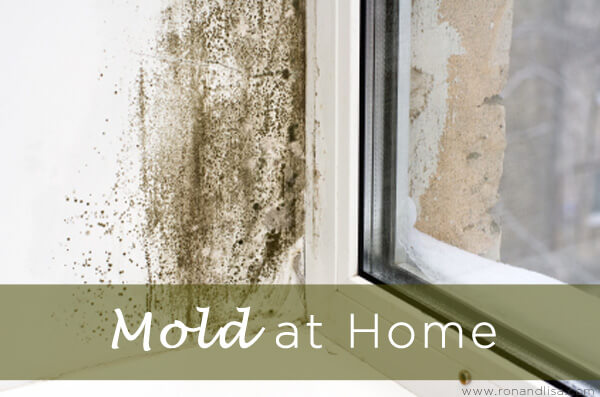September is Mold Awareness Month and time to tune in to your senses. If you smell a musty-mildew odor or have experienced headaches, nasal irritation, dizziness, fatigue, nausea or allergic responses (including hay fever, asthma and irritation of the eyes, nose, throat or lungs) but can’t locate the source – you could be breathing in a high dose of mold! Dangerous compounds produced by molds, called mycotoxins, can be released directly into the air you breathe. Exposure is linked to allergic reactions and other respiratory complaints and could be wreaking havoc on you & your family’s health. According to some experts, upwards of 40% of U.S. schools and at least 25% of all homes are affected by mold and microbial growth from water intrusion. Did you know the Better Business Bureau (BBB) and the Environmental Protection Agency (EPA) are advising homeowners to be proactive when it comes to dealing with mold and mildew? Before you jump into a hazmat suit, hold your breath and reach for your rubber gloves, there are a few mold basics you may find helpful:
Mold requires 4 basic things to survive:
1. Water/Moisture (from leaks, high humidity, condensation)
2. Food (ie: organic material like ceiling tile, wood, drywall, paper, etc).
3. Oxygen
4. Temperature between 40 and 110 degrees
Mold spores are ubiquitous in the indoor and outdoor environment. Eliminating all mold and mold spores is impossible; however, it is the indoor levels of mold that can be an issue. Concern about bathroom mildew is common, but seldom a problem as this area is always susceptible to mold growth. Adequate ventilation and routine cleaning should suffice to keep it under control.
Indoor mold can be controlled by controlling moisture. According to the EPA’s Mold Guide, mold growth can begin when mold spores land on wet surfaces. If you experience a leak of any kind fix it immediately. Don’t make the mistake of cleaning up the mold without eliminating the source. Timing is crucial. All wet surfaces must be completely dried within 24-48 hours to prevent mold growth.
Your nose knows! A mold problem can often be seen or smelled. Follow your nose to the source of the odor. Also, examine areas for visible signs of mold growth, water staining on ceilings, walls and floors. Remember, mold likes to hide in dark, damp areas.
 Bleach is not the answer.
Bleach is not the answer.
Did you know that allergic reactions can occur from exposure to both dead and living mold spores? Therefore, killing mold with bleach – an eye, skin and respiratory irritant – or other disinfectants may not prevent allergic responses. Moreover, bleach is not necessary since mold cannot grow in the absence of moisture. We’ll discuss alternative solutions in an upcoming post.
An ounce of prevention is worth a pound of detection. Indoor mold can be controlled by controlling moisture. Be sure you have some type of ventilation, such as a vent or window in all wet areas including bathrooms, laundry and kitchens, to reduce indoor humidity and prevent mold growth. Also, utilize adequately sized HVAC systems; avoid wet or previously wet building materials and damp construction cavities. Proper building construction via ventilation, insulation and drainage is imperative.
Test & Remediate. If you suspect indoor mold to be a problem, you can test your own indoor air affordably. By utilizing a do-it-yourself (DIY) mold test kit, you’ll know the scope of the problem before unnecessarily spending hundreds on hiring a professional. We recommend both an A DIY Mold Air Test (for as little as $49.95) and a DIY Mold Surface Test (for as little as $52.50); both of which include professional results from an accredited lab – delivered right to your mailbox! These methods can provide test results for over a 100 different types of mold. When it comes to remediation, rubber gloves and a dust mask are recommended for jobs other than routine cleaning. Be sure to run a true, medical-grade HEPA air purifier during clean-up. For a large mold problem or if you are highly sensitive to mold, seek an experienced professional to conduct the work. Always get estimates from at least three contractors before deciding on one. Finally, check references and be sure the company is certified through a third party certifying agency such as the IICRC or NORMI.





Make sure clothes dryers are vented outside the basement,
maybe not inside. It is a slimy greenish black substance, which could grow in humid environments.
A top level diabetic person, you are highly prone
to attacks.
He aoso files papers for your benefit as per method. Practically in states you may easily submit a
complaint about lawyers.